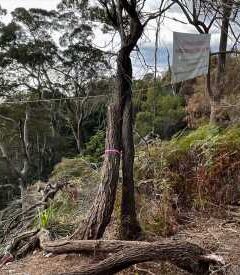Home » Australasia »
A Heavy in the Insect World Makes a Rare Appearance
Children and staff members at the Mount Cotton State School, an elementary school near a rainforest in Queensland, Australia, have spotted wallabies, koalas and snakes over the years.
But recently, builders who were adding new classrooms to the school made a discovery that stood out even among the famously diverse fauna of Australia, a continent where spiny mammals lay eggs, flightless birds kick with daggerlike claws and platypuses glow in the dark. The builders found a giant wood moth, which can have a wingspan of up to nine inches.
The moth — fuzzy-looking and mottled gray, with a passing resemblance to a well-loved stuffed animal — was found on the side of the new building.
“It was an amazing find,” said Meagan Steward, the school principal, in an interview with ABC Radio Brisbane that was broadcast on Sunday. “This moth was something that we had not seen before.”
The children were delighted, she said, and wrote fictional stories based on the moth, including one about a giant insect that eats one of the teachers.
The gray wood moth, or the Endoxyla cinereus, is found in Australia and spends most of its life as a larva inside eucalyptus trees, feeding off the tissue. As larvae, they live for three years, according to the Queensland Museum.
But as adults, they live for only about a week — dying soon after they lay eggs and mate. They are therefore rarely seen, said Christine Lambkin, a curator of entomology at the Queensland Museum, who collected the moths as a child and estimated there may be about a dozen sightings of the moth in one year.
“I had to dissect it and remove the abdominal contents, stuff it with cotton wool, and sew it up so that I could put it in my collection and it didn’t rot,” she recalled. (Ms. Steward, the principal, said the moth found at the school was returned to the forest.)
Adult moths do not eat. They have no functional feeding organs and instead draw their energy from the fat reserves they accumulated during the larva stage, according to a museum fact sheet about the moth.
They can sometimes be visible against streetlights, according to the fact sheet: “Great excitement usually occurs when one of these massive creatures comes into house lights.”
They typically rest on the gray trunks of gum trees, where they fold their narrow wings alongside their body, camouflaging them from predators.
Females of the species are especially large — males are only half the size of females.
A female can weigh up to 30 grams, about an ounce, which is more than some small mice or shrews, said Floyd W. Shockley, an entomologist at the National Museum of Natural History in Washington.
While the giant wood moth has an impressive wingspan, it does not have the widest one, he said.
The white witch moth, which is found in Mexico and South America, does, with a wingspan of up to 12 inches.
The giant wood moth’s large thorax — about the width of a finger — is what helps make it the heaviest moth, Dr. Shockley said. A female can carry up to 20,000 eggs in her abdomen.
Dr. Shockley said he was fascinated by the animal because it spends a majority of its life as an “immature” rather than as an adult, in contrast to humans and other animals; he said he was also impressed by the status of larval wood moths as a source of food for some Indigenous Australians.
“You can eat them raw or you can cook them,” Dr. Shockley said. “The flavor has basically been said to be something like almonds.”
The discovery of the moth at the school could help entomologists gather more data about the species’ distribution, which remains something of a mystery, he said.
“I think any entomologist would be really excited by finding these things,” Dr. Shockley said. “I’m a beetle person, and this would still be superexciting to me.”
Source: Read Full Article


